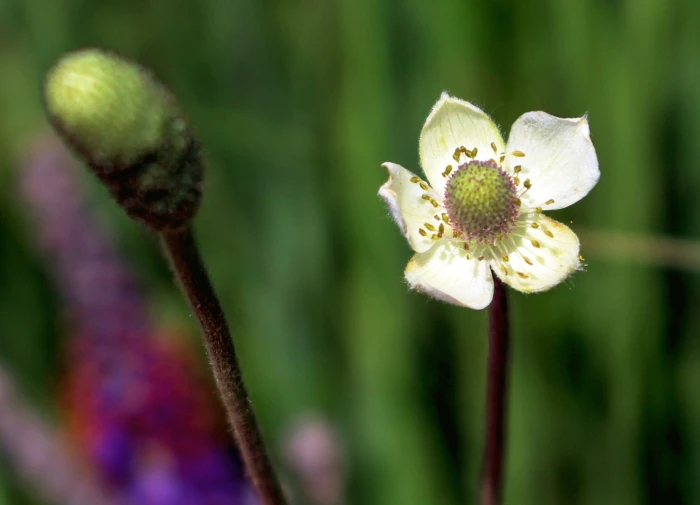Thimbleweed
(Anemone cylindrica)
Thimbleweed (Anemone cylindrica)
/
/

aarongunnar
CC BY 4.0
Image By:
aarongunnar
Recorded By:
Copyright:
CC BY 4.0
Copyright Notice:
Photo by: aarongunnar | License Type: CC BY 4.0 | License URL: http://creativecommons.org/licenses/by/4.0/ | Rights Holder: aarongunnar | Publisher: iNaturalist | Date Created: 2016-06-26T13:25:53-07:00 |



















































Estimated Native Range
Climate Requirements for Elizabeth, New Jersey
| This Plant | Your Site | Plant Suitability for Your Location | ||
|---|---|---|---|---|
| • Precipitation | 12" - 50" | 49" | Aquatic | Aquatic |
| • High Temp. | 63°F - 97°F | 87°F | Your summer temperatures are normal for this plant. | Excellent |
| • Low Temp. | -19°F - 35°F | 22°F | Your winter temperatures are normal for this plant | Excellent |
This plant may not grow well at your location - your precipitation is too high.
Summary
Anemone cylindrica, commonly known as Thimbleweed or Candle Anemone, is a perennial herb that is native to North American tallgrass prairies and open woodlands, particularly in the Central and Eastern USA, parts of the Rocky Mountains, and Canada. It is an upright, clump-forming species that can grow between 30–100 centimeters (12–39 inches) tall. Thimbleweed features greenish-white flowers that bloom from early to late summer, followed by distinctive, dense, cylindrical spikes of fruit that measure 20–35 millimeters (0.79–1.38 inches) long. The fruits, or achenes, develop gray-white, woolly styles when ripe, aiding in wind dispersal.
Thimbleweed is valued for its unique seed heads and its ability to thrive in prairie restorations or naturalized areas. It is often used in wildflower gardens, borders, and as a ground cover. This plant is drought-tolerant once established and attracts pollinators during its flowering season. It prefers full sun to part shade and can adapt to a range of soil types, from clay to sandy loams, as long as they have good drainage. While generally low-maintenance, it can be susceptible to leaf miners and rust. Thimbleweed is not known for aggressive roots or significant disease problems, making it a reliable choice for many garden settings.CC BY-SA 4.0
Thimbleweed is valued for its unique seed heads and its ability to thrive in prairie restorations or naturalized areas. It is often used in wildflower gardens, borders, and as a ground cover. This plant is drought-tolerant once established and attracts pollinators during its flowering season. It prefers full sun to part shade and can adapt to a range of soil types, from clay to sandy loams, as long as they have good drainage. While generally low-maintenance, it can be susceptible to leaf miners and rust. Thimbleweed is not known for aggressive roots or significant disease problems, making it a reliable choice for many garden settings.CC BY-SA 4.0
Plant Description
- Plant Type: Herb
- Height: 1-2 feet
- Width: 0.8-1.5 feet
- Growth Rate: Moderate
- Flower Color: Green, White
- Flowering Season: Summer
- Leaf Retention: Deciduous
Growth Requirements
- Sun: Full Sun, Part Shade
- Water: Low, Medium
- Drainage: Slow, Medium, Fast
Common Uses
Bee Garden, Bird Garden, Butterfly Garden, Deer Resistant, Drought Tolerant, Low Maintenance, Rabbit Resistant
Natural Habitat
Native to North American tallgrass prairies and open woodlands
Other Names
Common Names: Cottonweed, Long-Fruit Anemone, Long-Fruited Anemone, Long-Headed Anemone, Long-Headed Thimbleweed, Longhead Thimbleweed, Longhead Anemone, Anémone Cylindrique, Präriesippa
Scientific Names: Anemone cylindrica, Anemone cylindrica f. albida, Anemone cylindrica f. cylindrica
GBIF Accepted Name: Anemone cylindrica A.Gray